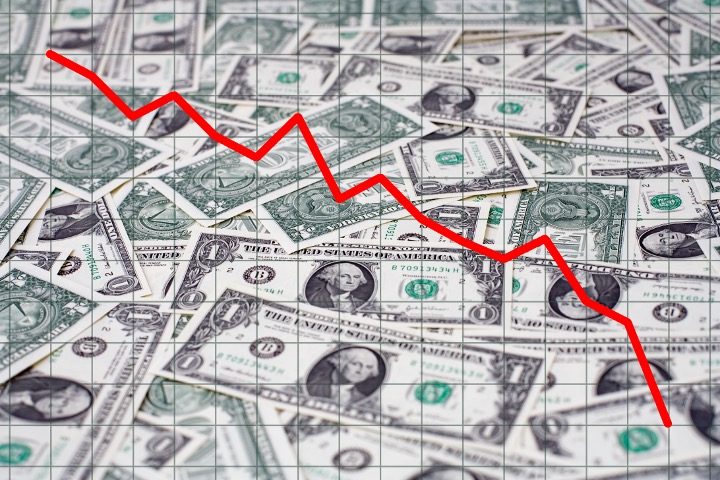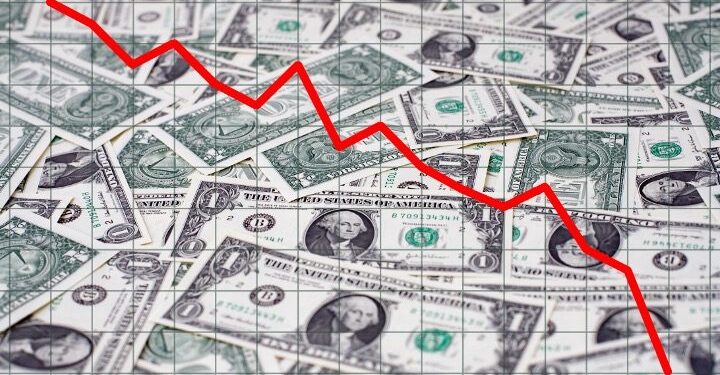
Two reports released on Wednesday reveal a weakening U.S. economy. The Labor Department announced that jobless claims, i.e., layoffs, rose to 238,000 last week, near a one-year high. And the private payroll processor ADP reported that the economy generated just 150,000 new jobs last month, falling below a muted estimate by Wall Street Journal economists of 160,000.
In late June, the government’s Bureau of Economic Analysis reported that the overall economy grew in the first quarter at a rate of just 1.4 percent. Last year the economy was humming along at nearly 5 percent annually in the third quarter, slowing to 3.4 percent in the fourth quarter.
Other “macro” (macroeconomic, or “big picture”) data reveal weakness in housing. Pending home sales (where a contract has been signed but the deal hasn’t closed yet) fell more than two percent in May, while new home sales dropped by double digits, 11.3 percent.
As consumers rein in spending, retailers like Walgreens are cutting their profits forecast and shuttering a “significant” number of their underperforming stores. The company’s CEO, Tim Wentworth, put the matter starkly: “The consumer is absolutely stunned by the prices of things … so we’ve had to get really keen [on reducing prices], particularly on discretionary things.”
Rite-Aid is in Chapter 11 bankruptcy, and closed 27 locations in Michigan and Ohio last month while it “restructured” its finances. This is in addition to the more than 500 stores it has already closed nationwide.
Ford Motor Company announced a “restructuring” of its ICE (internal combustion engine) vehicles last March in order to cut costs by $3 billion. A few months later it announced it would be cutting 3,000 jobs. And last week the company announced it would be cutting still more jobs.
BCA Research reported that American consumers have blown through the $2 trillion in savings built up during Covid and are now relying on credit cards to pay bills. Credit card companies are reporting increases in late payment and default rates, and generous offers of new credit lines have disappeared from mailboxes.
CBS News reported on the latest survey by Bankrate: It would take $186,000 a year, or more than $15,000 a month, to make the average American “feel secure,” meaning paying the bills, enjoying some discretionary spending, and putting some away in savings. That’s almost three times what the average American makes.
A survey done by the Federal Reserve Bank of Philadelphia found that more than one in three Americans are worried about running out of money before running out of month. That’s up from three in ten a year ago.
That same survey showed that even “upper income” earners (over $150,000 a year) are worried about making ends meet over the next six months.
As reported by Michael Snyder of The Economic Collapse blog, it now takes the average U.S. household $1,069 more every month to purchase the same goods and services as three years ago.
As an example of things on the “micro” level (it’s individuals, after all, who make up the economy) is a video of a stunned shopper that has garnered more than a million views on TikTok. Fox5Atlanta reported:
A recent TikTok video has gone viral, showing a user’s surprising experience with Walmart’s grocery prices.
The user explained in his video that he tried to use the “Reorder All” button for an order he placed two years ago, which originally cost $126.67.
To his shock, the same order would now cost $414.39.
This may be an outlier for any number of reasons. But it’s hard to believe the “government” numbers that report grocery prices up a little over 20 percent since Biden took over.
Other costs, thanks to currency depreciation, have soared as well:
- Home insurance premiums have risen an average of 38 percent since 2019;
- Home rental prices have gone up 30 percent since Biden was inaugurated;
- As a result, six in 10 American renters can’t afford the rent on a median-priced apartment;
- Gas prices are up nearly 50 percent since January 2021;
- The average interest rate for a 30-year fixed-rate mortgage has increased an astonishing 148 percent in three and a half years;
- As a result, the average mortgage payment has nearly doubled over that period;
- More than four out of 10 retired Americans are considering going back to work just to help pay the bills; and
- The average American household would be hard-pressed to find $500 to meet an unexpected emergency expense.
The two reports released on Wednesday reflect what’s happening to average Americans, who are being squeezed mercilessly by the collapsing purchasing power of the dollar, resulting in a slowing economy.
Related article:
Poll: Under Bidenomics, Half of Americans Struggling Financially Just to Keep Up

































 Reaction & Commentary
Reaction & Commentary
















